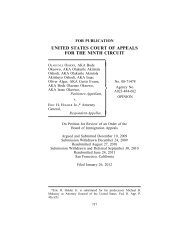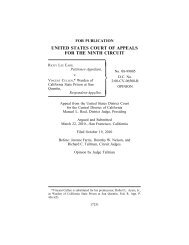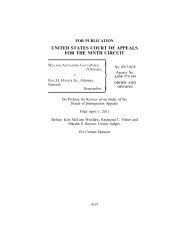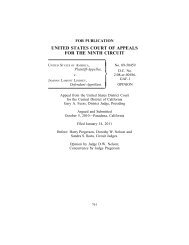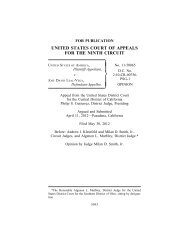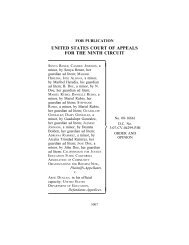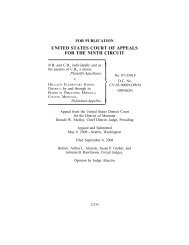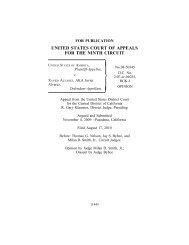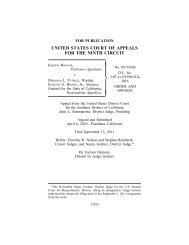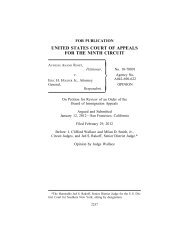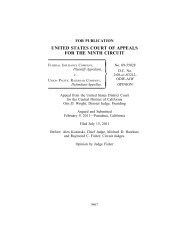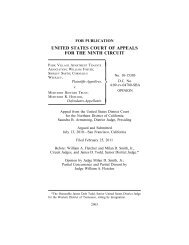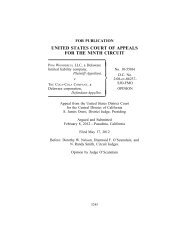UNITED STATES COURT OF APPEALS FOR THE NINTH CIRCUIT
UNITED STATES COURT OF APPEALS FOR THE NINTH CIRCUIT
UNITED STATES COURT OF APPEALS FOR THE NINTH CIRCUIT
Create successful ePaper yourself
Turn your PDF publications into a flip-book with our unique Google optimized e-Paper software.
9756 PAYNE v. PENINSULA SCHOOL DISTRICT<br />
than the IDEA, a plaintiff is entitled to hold the school<br />
responsible under those other laws.<br />
4<br />
The National School Boards Association (“NSBA”), as<br />
amicus, suggests that our conclusion is at odds with the<br />
Supreme Court’s decision in Booth v. Churner, 532 U.S. 731<br />
(2001), a case in which the Court construed the exhaustion<br />
requirement in the PLRA, 42 U.S.C. § 1997e(a). Indeed,<br />
Booth’s language factored “strongly” in Robb’s conclusion,<br />
since we noted in that case that “[t]he PLRA’s exhaustion<br />
requirement is framed in language similar to the IDEA’s.”<br />
Robb, 308 F.3d at 1050-51 (comparing “administrative remedies<br />
. . . available” under the PLRA, 42 U.S.C. § 1997e(a), to<br />
“relief that is also available” under the IDEA, 20 U.S.C.<br />
§ 1415(l)). In Booth, the Court concluded that the PLRA<br />
“mandate[s] exhaustion . . . regardless of the relief offered<br />
through administrative procedures.” 532 U.S. at 741. We held<br />
in Robb that, applied to the IDEA, this language meant that<br />
“a plaintiff must exhaust a mandatory administrative process<br />
even if the precise form of relief sought is not available in the<br />
administrative venue.” 308 F.3d at 1051. This wording suggests<br />
that even if a plaintiff has available non-IDEA forms of<br />
relief in addition to potential relief under the IDEA, the plaintiff<br />
must exhaust administrative remedies before pursuing any<br />
of them. While this conclusion was correct in Booth, there are<br />
important differences between the PLRA and the IDEA, and<br />
Robb incorrectly applied the same conclusion to the IDEA.<br />
The PLRA’s exhaustion requirement specifies that “[n]o<br />
action shall be brought . . . until such administrative remedies<br />
as are available are exhausted.” 42 U.S.C. § 1997e(a) (emphasis<br />
added). The language is unequivocal and makes no reference<br />
to parallel forms of relief. Booth sensibly interpreted the<br />
prohibition on bringing an action to mean that the PLRA<br />
restricted unexhausted prisoner litigation altogether. By contrast,<br />
the IDEA’s exhaustion provision applies only to “the filing<br />
of a civil action . . . seeking relief that is also available



